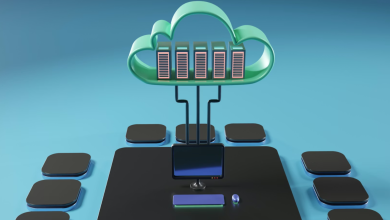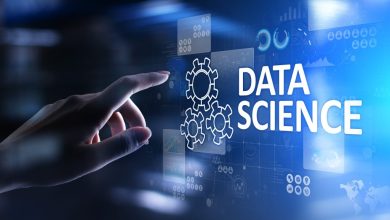
Water scarcity is reshaping agriculture, threatening yields, ecosystems, and food supply chains. Artificial intelligence is helping turn these risks into opportunities – delivering efficiency, resilience, and stronger returns for growers and the businesses that depend on them.
Farming has always been a gamble. That adage rings true across centuries.
While weather and markets have long been bettors at the farm’s poker table, the stakes have risen dramatically in recent years. According to the USDA’s Economic Research Service, agricultural production is constantly buffeted by yield risk, price changes, regulatory headlines, health shocks, and financial pressures.
Water scarcity now sits at the center of that risk. More than 70% of global freshwater withdrawals go to agriculture – but across the U.S., growers are struggling to secure that most basic input for their crops. The effects are cascading: a declining water supply threatens crop yields, strains ecosystems, and disrupts the stability of our food system.
These pressures matter far beyond the farm. When water becomes harder to access or more expensive to use, it jeopardizes not only farm incomes but also food affordability and supply chain reliability. For business leaders and policymakers alike, food sustainability isn’t an abstract concern – it’s becoming a defining economic and environmental challenge.
In the past, controlled environment agriculture (CEA) – growing crops in greenhouses or indoor farms – has been seen as a niche solution to agriculture’s challenges, but advances in AI are shifting this perception. With networks of sensors informing AI algorithms, it’s now possible to make automated decisions (e.g., when and how much to water) in real time that minimize resource consumption and push plants to their peak potential.
With the help of AI, CEA is transforming from a specialized, high-cost approach into a broader model for resilient and profitable food production. Here’s how.
70% water savings, 25% yield increase
Water has always been the limiting factor in outdoor agriculture. It’s the resource every crop depends on, yet it’s getting harder to come by as scarcity spreads across the globe. Traditional farming lets much of that water slip away through runoff, evaporation, or simple overshoot.
Controlled environments already change the odds by closely controlling irrigation – often even recapturing and recycling water – using a fraction of what an open field needs. AI tightens the loop even further.
Instead of running irrigation on rigid timers that water whether plants need it or not, AI systems read the crop’s actual state through substrate sensors and trigger water only when conditions call for it. The difference is dramatic: In a recent commercial pilot, growers who used AI-powered irrigation saw a 42% increase in water use efficiency compared to other district growers. To make those results even more remarkable, the same growers also saw a 25% increase in yield.
That result isn’t an outlier. Commercial trials with wireless sensor networks in nurseries and greenhouses routinely show 40–70% water savings when growers switch from set-schedule irrigation to on-demand, sensor-driven control.
The lesson is clear: when irrigation becomes a feedback loop, guided by data instead of habit, water stops being squandered and starts being managed with remarkable precision.
Curbing nutrient pollution and saving energy
When growers overshoot irrigation, they aren’t just wasting water, they’re washing nutrients straight out of the root zone and into the environment. AI-driven CEA irrigation changes that math.
In a Greenhouse Grower report on precision irrigation, researchers estimated that widespread adoption of smart irrigation could slash fertilizer needs by 50%, saving ornamental growers roughly $10 million a year while keeping runoff out of local waterways. AI enables a virtuous cycle: just enough water, just enough nutrients, at just the right time. Crops improve, inputs shrink, and waste all but disappears.
Smarter irrigation also reshapes how much energy a facility requires. Every drop of water adds humidity, and every spike in humidity forces HVAC systems to work harder, either by venting precious heat or running dehumidifiers. Dynamic scheduling can smooth out spikes and lighten the climate-control load.
Lighting is the other energy giant in vertical farming – rows of LEDs blaze for hours to replace the sun. But even here, AI is finding cracks to exploit. Wageningen University researchers showed that by dimming lights during plants’ less sensitive phases – or when electricity prices peak – they cut energy costs by 12% with no loss in photosynthesis.
It all points toward a new kind of orchestration: irrigation, lighting, and HVAC working as a coordinated system rather than isolated levers. Once irrigation is precise and data-driven, it becomes possible to tune light and climate around the plant’s real-time state.
The result is more growth for less input. Lower water use, fewer chemicals escaping into the environment, and smarter energy management – without compromising yield. In a world of rising climate volatility, AI-enabled CEA proves that sustainability and performance don’t have to be at odds.
Labor savings, improved yield, greater consistency
Every gallon of water and every pound of fertilizer saved isn’t just a sustainability win – it’s money back in the grower’s pocket. Input costs go down when waste is eliminated. But the real economic weight sits elsewhere: labor.
According to the USDA, labor alone accounts for about 42% of total operating costs in U.S. horticulture. Traditionally, large facilities carry entire crews of techs whose job is to walk the rows, check valves, and check data. It’s repetitive, expensive, manual work.
By moving from manual, schedule-based irrigation to an AI-managed system, growers can redeploy that labor to higher-value roles. This shift in workforce focus can improve productivity (since decisions are data-backed and consistent) and helps farms address the labor shortage issue with tech rather than sheer headcount.
Implementing AI in CEA can also boost yields and consistency, which directly improves the bottom line. One striking example came from a flower grower who piloted AI-controlled irrigation to achieve a 58% increase in yield in an already high performing facility – ending the pilot with yields 81% higher than industry average. The plants received just the right amount of water at the right times, leading to healthier growth and more saleable product – a benefit worth roughly five times the cost of the technology.
Consistency is king in large-scale farming, and data-driven control leads to more uniform crops. When AI keeps conditions within tight optimal bands, each plant in the facility performs closer to its genetic potential, resulting in predictably high outputs rather than a mix of bumper yields and failures. This reliability is especially valuable for scaled operators who supply retail chains or have tight contracts – fewer surprises in production translates to smoother operations and higher profitability.
Over time, the ROI from these technologies tends to stack up on multiple fronts. Input costs go down (through savings in water, energy, and nutrients), crop losses and rework drop (thanks to early issue detection and consistent quality), and output predictability goes up (enabling better business decisions and customer fulfillment). These advantages reinforce each other.
The AI+CEA revolution is gaining steam
These developments haven’t gone unnoticed. Investors have poured capital into indoor ag startups, betting on their ability to deliver “climate-resilient” food production. Governments are backing it too, especially in regions that depend heavily on imports. Gulf states, which import about 85% of their food, now host some of the world’s largest CEA farms to strengthen local supply. In the U.S., policymakers increasingly fold controlled environment agriculture into “climate-smart agriculture” strategies.
What was once dismissed as too energy-hungry or experimental is fast becoming a viable, scalable solution. With AI control, growers can do more with less – less water, fertilizer, energy, and labor, and more consistency in what they deliver.
And the broader story is hopeful: A food system that’s resilient to climate shocks, less wasteful with resources, and better able to feed people close to where they live is within reach.
AI won’t solve every challenge in agriculture, but it gives us the tools to build a future where sustainability and productivity no longer pull in opposite directions.




